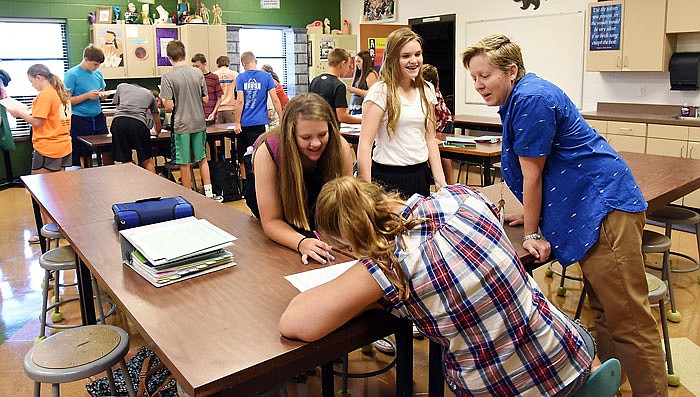The Blair Oaks School District received a near perfect score on its Annual Performance Review (APR).
Out of the 140 points possible, the district achieved 139, earning a 99.3 percent and maintaining accreditation by the Missouri Department of Elementary and Secondary Education (DESE). Districts must score at least 70 percent on the APR to be accredited.
DESE releases the APR primarily to determine how public school districts and charter schools are performing. The accreditation measure considers five categories: academic achievement, subgroup achievement, college and career readiness, attendance and graduation rates.
For all five categories, DESE gives districts three types of points for each category. They reward districts for making progress by averaging the districts' scores over two years. They average scores over three years to determine the districts' "status" in each category, and they assign points for growth based on projected student achievement compared to actual student achievement.
"We're extremely pleased with the results shown on the APR report," Blair Oaks Superintendent Jim Jones said. "I'm so proud of our students, parents, faculty, staff and building administrators. One thing that group does is always commit to setting the bar high. The thing that makes me the proudest is they do the work to reach it, and those results show the commitment by all those folks."
Blair Oaks received full points for academic achievement, college and career readiness, attendance and graduation rate. The district missed one point on subgroup achievement, which is based the state standardized test results for students who participate in the free and reduced price lunch, have a racial or ethnic background, English language learners and students with disabilities.
Blair Oaks fell one point short on the science standardized test, which is taken by fifth-grade, eighth-grade and high school biology students.
"When it comes to science, I know statewide scores were a little lower in comparison to other areas," Jones said. "Ultimately the challenge becomes using the scores to further improve learning and teaching processes, and that's what we do."
The college and career readiness category includes the ACT and COMPASS college preparatory tests, the military ASVAB test, Advanced Placement and dual-credit tests and post-secondary placement, which is collected 180 days after students graduate to determine how many went on to college, the military or the competitive workforce.
Jones said more than 80 percent of Blair Oaks graduates go on to two- or four-year colleges. The district's four-year graduation rate, which accounts for 30 points of the APR, is 96.9 percent.
In 2016, the APR data showed 97.8 percent of Blair Oaks students attended school 90 percent of the time, which is how DESE calculates points for the attendance portion.
Jones attributes Blair Oaks' success to never believing there's a finish line. While the district is celebrating the APR score, staff are also finding content areas they can improve on so they're "better tomorrow than they were today."
Blair Oaks' APR score was 93.2 percent in 2014, jumped to 96.4 percent in 2015 and moved up another three points this year.
"We weren't displeased with 93.2 percent, or 96.4 percent," Jones said. "We want to do the best we can. When these kids go to get a job or college, we want to make our students the best they can be. The teachers are focused on making themselves the best they can. It's a pretty awesome educational machine."

